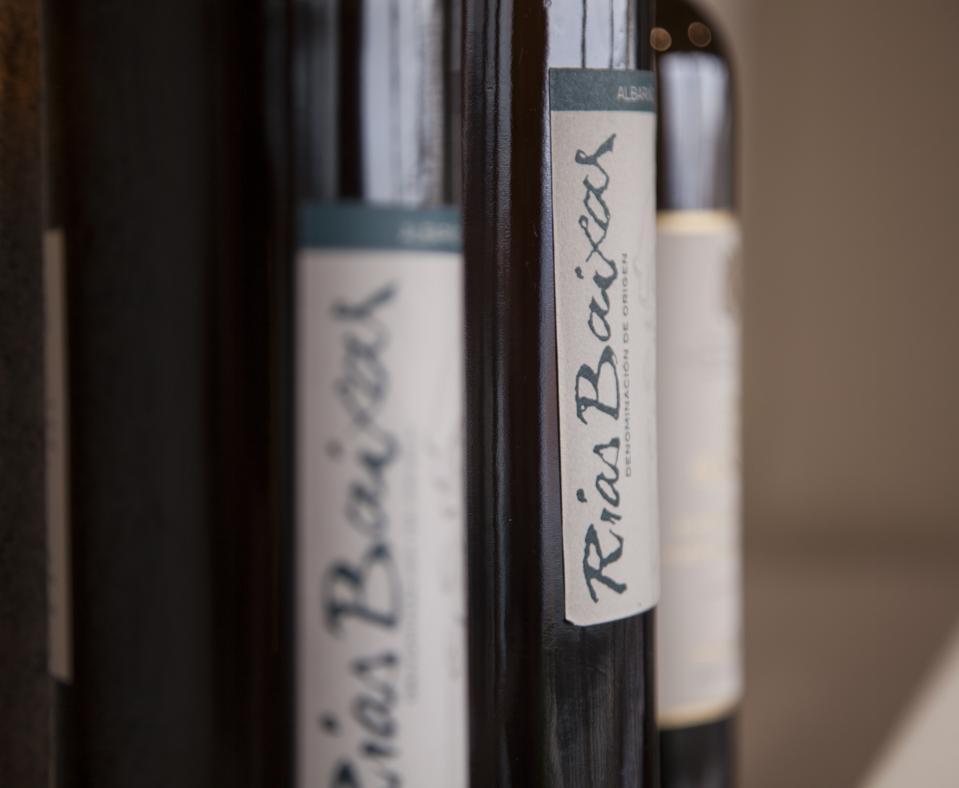During the first week of every August, in Galicia’s Rías Baixas wine region, the Spanish town of Cambados gushes over a highly-prized native white grape.
It’s the Albariño, a citrusy staple used in wine making for up over 95 percent of the region’s D.O. Rías Baixas vineyards.
This special party brings forth what’s known as Festa do Albariño, a festival of concerts, parades, street performances and open-air parties with local peñas and associations gracing every corner with colors and traditions.
However, many festival goers also enjoy another celebratory activity –wine tastings.
“There are a lot of different activities from wine courses to parades with traditional Galician music, but the main attraction is visiting the stands of the different wineries,” said Noah Chichester, founder of The Wines of Galicia website. “You’re given a tasting glass to wear around your neck and you can go from stand to stand to try that year’s wine for a few Euros a glass. At night, the festival has become known for its concerts, which bring in artists from the Spanish-speaking world to perform each night.”
Why Is This Spanish Wine Region Have A Festival?
According to the event’s website, the Festa do Albariño began as a competition between two winemakers named Bernardino Quintanilla Álvarez and Ernesto Zarate in 1953.
On the night of August 28, Álvarez, who was also a local lawyer, and his friend, Zarate, had a private garden dinner with seven other grape growers from a select circle of mutual acquaintances. The evening was to settle a friendly debate over who made the best Albariño.
That private dinner uncorked what would become a public affair. Chichester also explained that by 1965 this contest grew into a genuine festival thanks to a special visitor – Franco’s Minister of Tourism, Manuel Fraga.
“A native son of Galicia, ‘Don Manuel’ used his influence to spread the festival far beyond Galicia’s borders by featuring the Festa de Albariño on Spanish state television,” explained Chichester, a specialist in Galician wines.
However, Fraga’s connection didn’t stop there. In 1969, he became a founding member of the Capítulo Serenísimo do Viño Albariño—or the “Serene Order of Albariño Wine”— that lent an air of formality to the festival’s proceedings.
Is Festa do Albariño in Cambados Popular?
Marking its 73rd year in 2025, the Festa do Albariño has catapulted to the forefront in Spain and beyond. In 1977, the event was declared what’s referred to as a Fiesta de Interés Turístico Nacional, an official proclamation by Spanish officials for its touristic importance, and it’s still one of the most important wine festivals in Galicia.
While the Festa do Albariño provides a very good reason for visiting Cambados, this seafaring town also is known for other offerings including seafood. Cambados and the surrounding Val do Salnés (Salnés Valley) are also known for their fishing and canning industries.
“The name ‘Salnés’ refers to medieval salt flats where locals would collect salt to use to preserve freshly caught fish to send to other parts of Galicia and Spain,” said Chichester. “Today, the area is home to some of the best shellfish in the world, and canneries pack it up to be sent to gourmet stores all around the world.”
Other Offerings In Cambados Besides Festa do Albariño
Visitors can taste and see for themselves what else Cambados has to offer. Try Galician cuisine and a fine Albariño selection of at the Michelin-starred Yayo Daporta, or order octopus, razor clams or other seafood specialties at O Bo Paladar.
Two other recommendations for finding traditional Galician dishes include Ataberna do Trasno, with a tavern-style atmosphere, and Ribeira de Fefiñáns, which overlooks Cambados’ famous Fefiñáns Square.
Of course, visiting a winery is a must. Established in 1904, the Bodega del Palacio de Fefiñáns is Cambado’s oldest winery, set within a historic pazo. Just outside Cambados, venture along the Tremoedo Wine Route (Vilanova de Arousa), a scenic route winds through wineries and vineyards.
Other things to do in Cambados are many. See ruins of the gothic Santa Mariña de Dozo church or walk the seaside “boardwalk” (made out of stone) through the old fishing quarter of San Tomé to the medieval Tower of San Sadurniño. Next to the ruins, the Ethnographic and Wine Museum is Galicia’s first wine museum, with a sculpture garden by Manolo Paz.
Head to neighboring fishing villages such as Combarro or the town of O Grove and take a boat to see bateas, floating mussel farms in the Ría de Arousa (Arousa Estuary).
“With its coastal beauty, noble history, and deep-rooted wine culture, Cambados is a must for travelers seeking a true taste of Galicia—especially during the unforgettable Festa do Albariño,” said Chichester.

